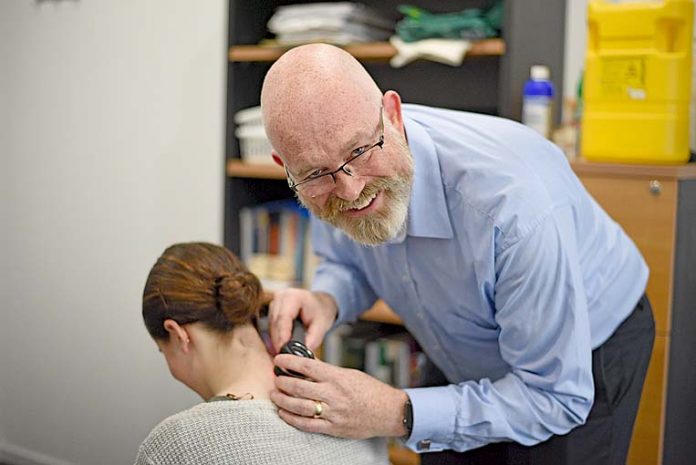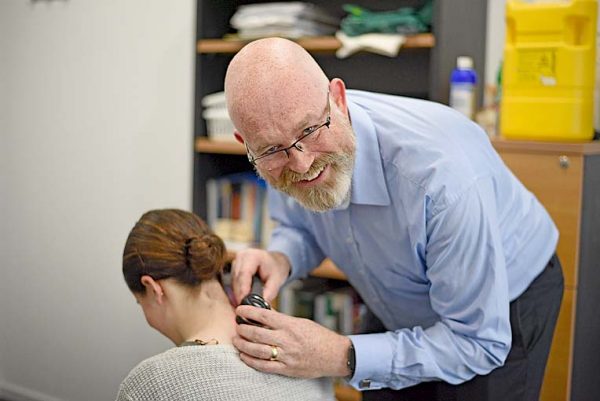

Picture: SANDRA MORELLO
MOUNT Gambier general practitioner Dr Richard Try has warned people to ensure they have their skin checked regularly given the prevalence of skin cancer in the region.
Dr Try – who specialises in skin cancer detection and diagnosis – says people should be vigilant with their skin and detecting potential skin cancers.
“I have really developed an interest in skin cancer over the past five years after seeing lots of it – every week I would see it,” Dr Try said.
Moving to Australia from the United Kingdom in 2008, he said the rates of skin cancer in Australia were significantly higher and his own fair skin sparked his interest in the specialty.
“There is just so much out there,” Dr Try said.
While the most common skin cancers he witnessed were basal cell carcinoma and squamous cell carcinoma, he said these should not be ignored given they could spread.
But he warned melanomas were the most dangerous form of skin cancer, which could be life threatening and sometimes fatal.
“I would see a melanoma around once every two months – about eight to 10 a year,” Dr Try said.
He revealed the youngest patient with a melanoma was just 17 years old and identified in a routine skin check.
“They came in and asked to have their moles checked and one looked dodgy. Fortunately, it was very, very early and was in situ. We got rid of it and the person was cured,” Dr Try said.
“Skin cancers can be found any age group.”
While fairer skin people were at higher risk, he warned melanomas could appear in anybody even with darker skin.
“People should not feel they are safe because they have skin that always tan and have darker skin. Some research has shown people who do not burn spend more time in the sun,” Dr Try
said.
He said this increased their UV exposure and raised their chance of skin cancer.
“Quite often people who do burn in the sun will protect themselves more because they do not like getting burnt.”
But he warned skin damage was often linked to sun exposure when they were younger, particularly during teenage years.
“Some people have bathed on the beach when they were teenagers thinking they were invincible. But 20 to 30 years later we are cutting skin cancers out of them.”
He called for younger people to protect their skin to decrease rates of skin cancer into the future.
“If we do find melanomas in skins checks, they are usually at an early stage – I do see a couple that are at a later stage and they are referred on for treatment,” the doctor revealed.
“Melanomas can be fatal – it can be in an existing mole or a new mole.”
But he warned other types of skin cancers could spread and be difficult to remove if they were on the scalp, face or ears.
“These can appear like a spot, ulcer, a cut or wound that will not heal,” the general practitioner said.
“If you have a spot that is not going away and is not healing in the time you would expect, that could be a sign of skin cancer – it is important to get it checked.”
Dr Try – who has qualifications in skin cancer after undergoing a number of courses – not only focuses on detection, but also treatment.
He said options available for people included having the spot surgically removed, the use of creams or freezing with liquid nitrogen.
Dr Try urged people to have a skin check once per year and to see a doctor who has trained in the field.
“But if you have a mole which has changed, got bigger, itchy or sore, they should get that checked straight away.”







